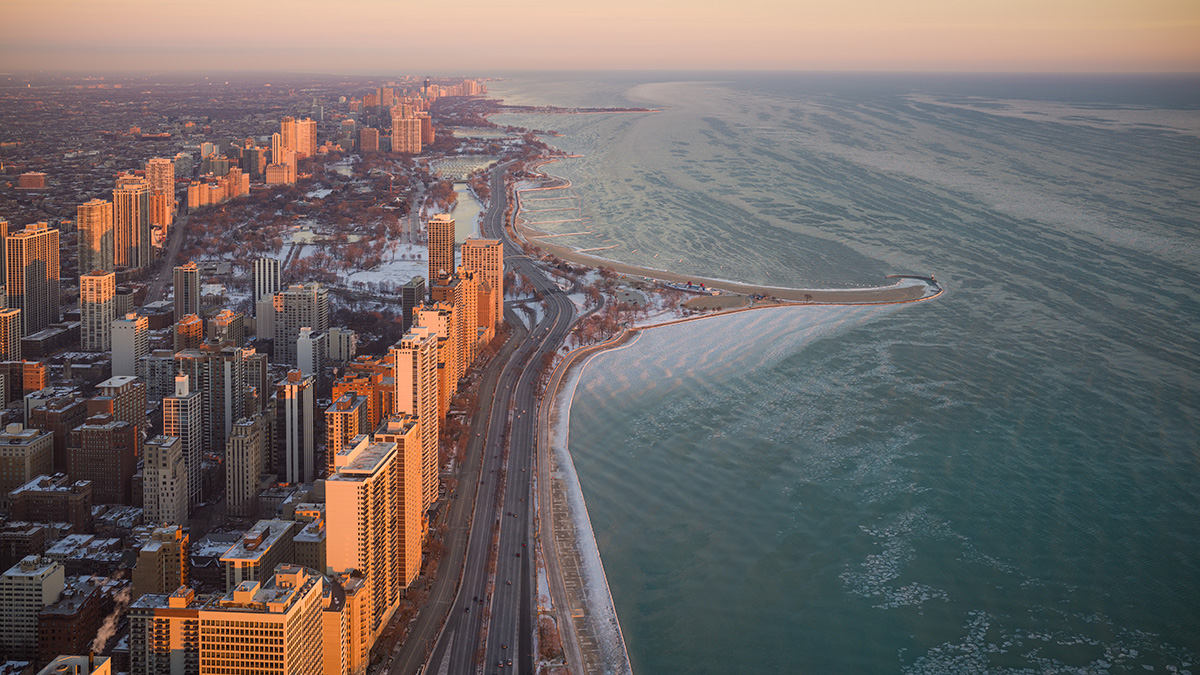Lake Michigan is a major resource for drinking water, manufacturing processes, and other economic gains for the state of Michigan and surrounding areas. However, it’s no secret that human activities have affected water quality in the Great Lakes, particularly in recent years. A recent study in Limnology and Oceanography Letters is now showing by just how much.
Between the 1800s and 2020, chloride levels in Lake Michigan have risen from 1–2 to more than 15 milligrams per liter. And we can expect that rise to increase over the next 200 years, reaching 24 milligrams per liter, which will not only affect water quality but also harm nearby ecosystems.
“If we destroy that [freshwater] resource, that’s going to have catastrophic effects on the way of life for everyone who lives in [the Lake Michigan] region.”
Much of the spike has been caused by human activity, especially road deicing, according to Hilary Dugan, a limnologist from the University of Wisconsin–Madison and first author of the new study. Road salt is about 60% chloride, and it takes about 5 million metric tons of road salt to raise Lake Michigan’s salinity by 1 milligram per liter of solution; at current rates, that increase takes 2–3 years. Much of that, researchers posit, comes from more than 300 tributaries to Lake Michigan, which vary in size and shape.
“[It’s] a warning signal to people who rely on these water resources,” Dugan said. “They’re valuable to us because they’re freshwater, and if we destroy that resource, that’s going to have catastrophic effects on the way of life for everyone who lives in this region.”
Testing the Waters
In July 2018, Dugan and her team tested water from 235 of approximately 300 tributaries leading into the lake, analyzing each sample for chloride. To approximate chloride load, tributary chloride measurements were compared against discharge estimates for each sampling point using U.S. Geological Survey stream gauge data.
Chloride concentrations varied widely across tributaries, ranging from less than 1 to 265 milligrams per liter, indicating that many, but not all, tributary chloride concentration levels are below the EPA’s 230 milligram per liter toxicity threshold. The highest concentrations were found in southern Wisconsin and Indiana, where five tributaries sampled—the Grand, St. Joseph, Fox, Kalamazoo, and Milwaukee rivers—accounted for 71% of the chloride increase. According to Dugan, greater population and industrial density (and thus more roadways and demand for wintertime deicing) and larger tributary size contributed to these inputs.
Using current data and a mass balance model, researchers also projected that over the next 2 centuries, Lake Michigan’s chloride concentrations will rise from 15 to 24 milligrams per liter.
“I want the takeaway to be that we need to rethink how much salt we’re using and how salt is regulated and monitored.”
Even levels below EPA thresholds can be cause for concern, said Rick Relyea, a freshwater ecologist at Rensselaer Polytechnic Institute. “We don’t really have tremendous data to know what concentration is going to impact things,” he said. Government regulations in the United States were set decades ago on the basis of limited data, yet Relyea, who was not involved in the new study, said recent research has shown that levels as low as 40 milligrams per liter can harm aquatic organisms like zooplankton. “This means we have time to turn this around before impacts are pervasive,” he said.
Although road salt is the largest contributor to increases in salinity, Dugan said, it’s not the only one. “Road salt is maybe half” of the chloride that winds up in waterways, she said. “The other half is livestock, fertilizer, water softeners.” Still, she believes that more judicious and cost-effective use of road salt has the greatest potential to limit ecological damage caused by an increase in the Great Lakes’ salinity.
“I want the takeaway to be that we need to rethink how much salt we’re using and how salt is regulated and monitored,” Dugan said. “I think we have an opportunity to use a lot less salt and still maintain public safety.”
Relyea agreed, pointing out that lakes across the northern United States, Canada, and Europe all have seen salinity levels climb from 3 to 5 millgrams per liter 40 years ago to 15–20 milligrams per liter today. Like Dugan, Relyea said the study’s findings add to a growing call to do something about the amount of salt humans add to the environment before there are drastic ecological effects.
—Robin Donovan (@RobinKD), Science Writer
This news article is included in our ENGAGE resource for educators seeking science news for their classroom lessons. Browse all ENGAGE articles, and share with your fellow educators how you integrated the article into an activity in the comments section below.


